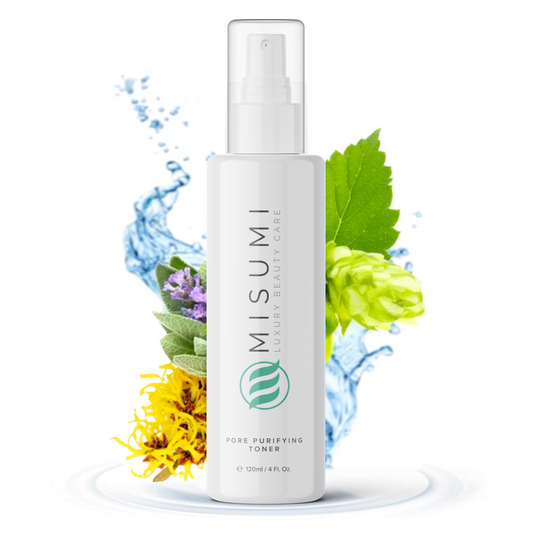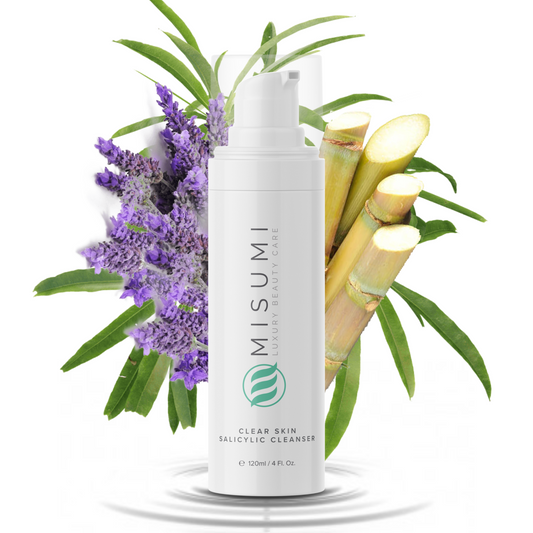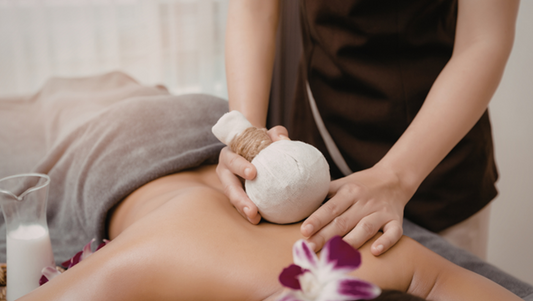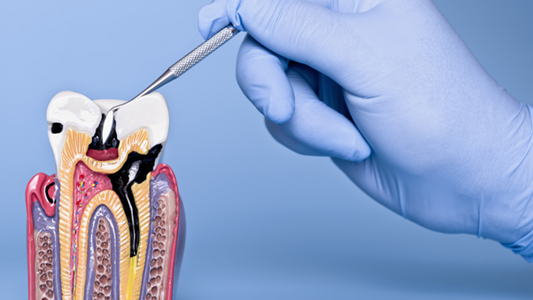If you're looking to get your skin glowing and radiant, exfoliating gel for face is the way to go. To achieve glowing skin and radiant skin, it's essential to understand the benefits of facial exfoliation, what ingredients are best for your needs and how often you should use an exfoliant.
Let us guide you through the process of understanding facial exfoliants, getting the most out of them and unlocking clear and healthy skin. From understanding what facial exfoliants do, through tips on getting the most out of them, all the way up until professional advice - let us help you unlock clear and healthy skin.
Top Exfoliating Gel Products
Exfoliating gels are an essential part of any skincare routine. They help to remove dead skin cells, unclog pores, and promote cell turnover, leaving the skin looking bright, smooth and refreshed Here are the five best exfoliating gels that are currently available on the market.

1. Neogen Dermalogy Bio-Peel Gauze Peeling Lemon
The Neogen Dermalogy Bio-Peel Gauze Peeling Lemon is a gentle and effective exfoliating gel that is suitable for all skin types. It is formulated with lemon extract, which helps to brighten and even out the skin tone, as well as lactic acid and glycolic acid, which help to exfoliate the skin. The gauze pads are textured, which helps to remove dead skin cells and impurities. The product is easy to use and leaves the skin feeling smooth and refreshed.
2. Tatcha The Rice Polish Foaming Enzyme Powder
The Tatcha The Rice Polish Foaming Enzyme Powder is a luxurious exfoliating gel that is perfect for those with sensitive skin. It is formulated with rice bran, which helps to gently exfoliate the skin, as well as papaya enzymes, which help to dissolve dead skin cells. The powder transforms into a creamy foam when mixed with water, and it leaves the skin feeling soft and smooth.
3. Peter Thomas Roth Firmx Peeling Gel
The Peter Thomas Roth Firmx Peeling Gel is an effective exfoliating gel that is suitable for all skin types. It is formulated with pineapple and pomegranate enzymes, which help to dissolve dead skin cells and promote cell turnover. The gel also contains glycolic acid, which helps to exfoliate the skin. The product is easy to use and leaves the skin feeling soft and smooth.
4. Dermalogica Daily Microfoliant
The Dermalogica Daily Microfoliant is a gentle exfoliating gel that is perfect for daily use. It is formulated with rice enzymes, which help to exfoliate the skin, as well as salicylic acid, which helps to unclog pores. The powder transforms into a creamy paste when mixed with water, and it leaves the skin feeling soft, smooth and refreshed.
5. Skinfood Black Sugar Mask Wash Off Exfoliator
The Skinfood Black Sugar Mask Wash Off Exfoliator is a popular exfoliating gel that is perfect for those with oily or acne-prone skin. It is formulated with black sugar, which helps to exfoliate the skin, as well as shea butter and macadamia oil, which help to moisturize the skin. The product is easy to use and leaves the skin feeling soft, smooth and refreshed.
In conclusion, exfoliating gels are an important part of any skincare routine. The five products reviewed above are all excellent choices that are sure to leave your skin looking bright, smooth and refreshed. When choosing an exfoliating gel, it is important to consider your skin type and choose a product that is suitable for your specific needs.
What is Exfoliating Gel for Face?
Removing dead skin cells and other impurities from the skin concern the face, exfoliating gel is a skincare product designed to improve complexion. Exfoliating gel for face can be employed as part of a comprehensive facial regimen or applied to particular areas for focused attention. Exfoliation aids in clearing blocked pores, diminishing skin imperfections, and evening out complexion.
Exfoliating gel is a type of topical product which contains small particles that act as tiny scrubbers on the surface of skin, eliminating dirt, oil and dead cells to unblock pores and reduce breakouts.
The particles in exfoliating gels are usually made from natural ingredients such as sugar cane, fruit extract alone, jojoba beads or apricot kernels. These products are often marketed as “gentle” exfoliants because they don’t contain harsh chemicals or abrasive materials that could damage delicate facial tissue.
Benefits of exfoliating gel include sloughing off dead skin cells from the surface layer, and preventing pore-blocking build up which can lead to acne and blackheads. By using an exfoliant regularly you can improve circulation in your face resulting in brighter skin and more vibrant looking complexion with fewer signs of aging such as wrinkles , age spots , sun damage , etc . Additionally regular use will help minimize discoloration caused by hyperpigmentation due to hormonal changes or environmental factors .
Physical scrubs have small granules that manually remove dirt peel oil and grime from smooth skin, while chemical peels/acids dissolve them through their active ingredients (AHAs/BHAs). Care should be taken to not overuse either of these methods, heeding the instructions provided.
Exfoliating gel for face is a great way to improve the look and feel of your skin. For the best outcome and fresh skin, take these steps to use exfoliating gel on your face correctly and securely.
Key Takeaway: By utilizing exfoliating gels as part of your skincare regimen, you can help to promote a more luminous complexion, reduce signs of aging and even out discoloration. By using them regularly, you can achieve a brighter complexion with fewer breakouts and reduced signs of aging.
How to Use Exfoliating Gel for Face?
Before you begin exfoliating, ensure that your skin is prepped by cleansing it with a mild cleanser and warm water. First, cleanse your face with a gentle cleanser and warm water. This will remove any dirt or makeup that could clog up the pores when you use the exfoliant. After washing your face, dry off with a soft towel and moisturize to ensure skin stays hydrated during exfoliation.
Gently massage the exfoliating gel into your face in circular motions, paying special attention to areas where blackheads or blemishes are present. Be sure not to scrub too hard as this can cause irritation or redness on sensitive skin types.
Focus on areas where there are blackheads or blemishes as these need extra attention when using an exfoliant product. Allow the exfoliating peel gel to remain on your skin for a period of five minutes prior to washing off with tepid water.
After rinsing off all of the product from your face, apply a light moisturizer to help soothe any irritated areas while also locking in moisture into freshly exposed layers of skin cells underneath dead skin cells that were removed during the exfoliation process.
Repeat this exfoliation step according to your skin type's individual needs, consulting a medical professional if necessary. Always consult with a medical professional if you are unsure what frequency would be best suited for particular individual needs.
Exfoliating your face with a quality exfoliant can help to reveal brighter, smoother skin. Selecting a suitable exfoliant with the proper components for desired results is essential. It is important to select an exfoliating product that contains the necessary components for successful results.
What Ingredients Should You Look For in an Exfoliating Gel?

When it comes to choosing the right exfoliating gel for your skin, there are certain ingredients you should look out for. For optimal results, opt for natural exfoliants such as aloe vera, jojoba oil and honey which can help soothe skin while removing dead cells and providing anti-inflammatory benefits to reduce redness and irritation.
These natural ingredients also provide anti-inflammatory benefits that can help reduce redness and irritation associated with exfoliation. Additionally, they may contain antioxidants which can help protect against environmental damage from pollutants or UV rays.
Chemical exfoliants like glycolic acid and lactic acid are often found in exfoliating gels as well but should be avoided if you have sensitive skin. These physical and chemical exfoliation agents work by breaking down the bonds between dead skin cells on the surface of your face to reveal brighter, smoother looking skin underneath.
However, these harsh chemicals may cause irritation or dryness if used too frequently or in higher concentrations than recommended.
It is important to consider other factors when selecting an exfoliant such as its pH level and texture of the product itself. A balanced pH level is essential as it helps keep your complexion healthy without stripping away natural oils from your face that are necessary for maintaining moisture levels throughout the day.
The texture of a product is just as important, since using something too abrasive could irritate delicate facial tissue even further. Before buying skincare products, always review labels to ensure they don't contain any known allergens or potentially irritating fragrances that could cause adverse reactions on your face.
When selecting an exfoliating gel, it is essential to look at the components in the formula - both natural and artificial. Moreover stripping skin itself, one's complexion and condition should be factored into the decision of how frequently an exfoliant is employed.
Key Takeaway: When choosing a facial exfoliant, opt for natural components such as aloe vera and jojoba oil to nurture the skin while sloughing off dead cells. When dealing with delicate skin, it's best to dodge chemical components like glycolic or lactic acid as they may lead to inflammation. Additionally, check labels to make sure products don't contain any allergens or irritating fragrances before purchase in order to avoid potential adverse reactions on your complexion.
How Often Should You Use an Exfoliant?
Exfoliating your skin is an important part of skin care routine or any skincare routine, but how often should you exfoliate? For individuals, the ideal frequency of exfoliation should be determined based on their skin type and condition. For most people, exfoliating one to two times per week is recommended as a good starting point.
For those with regular skin, a facial exfoliation is suggested to be done one or two times weekly. Exfoliating regularly can help slough away accumulated dead skin cells, restoring a vibrant glow to the face. It also helps to keep pores clear so they don't become clogged with dirt and oil. For those with sensitive skin, exfoliating once every two weeks is recommended to minimize any potential irritation or redness.
Those who have dry or combination skins may find that they need more frequent exfoliation than others in order to keep their complexions looking healthy and vibrant. For those with dry or combination skin, exfoliating no more than three times a week can help to maintain healthy and vibrant complexions.
To ensure your skin looks its best, it is essential to exfoliate regularly but not excessively. With the right preparation and product choice, a facial exfoliation routine can be an integral part of maintaining healthy, vibrant skin. To maximize the benefits of facial exfoliation, here are some tips to consider.
Key Takeaway: Exfoliation should be part of your skincare routine, but the frequency depends on skin type and condition. Normal or sensitive skins can exfoliate once or twice a week while those with dryer complexions may need to step up their game and scrub more often - no more than three times per week though.
Tips for Getting the Most Out of Your Facial Exfoliation Routine
When it comes to facial exfoliation, preparation is key. Before you begin, ensure your skin is prepped by using a mild cleanser and toner to clear away any dirt or oil. Once you've washed and toned your face, apply a scrub to the skin that can target any debris or sebum clogging up pores. After cleansing and toning, replenish your skin's moisture with a light moisturizer.
For optimal results, select a facial exfoliant tailored to your skin type. For those with sensitive or dry skin, opt for an exfoliating gel tailored to their complexion skin texture; conversely, with oily skin or combination complexions should reach for products containing AHAs and BHAs instead of abrasive physical scrubs. To avoid any damage to delicate facial tissue in the long run, steer clear of abrasive physical scrubs.
By adhering to these pointers, you can optimize your facial exfoliation regimen and upgrade the condition and look of your complexion. It is essential to be cognizant of potential missteps when utilizing facial exfoliants in order to guarantee that you are adequately caring for your skin.
Common Mistakes to Avoid When Using Facial Exfoliants
Always Do A Patch Test
When it comes to using facial exfoliants, many people make the mistake of not doing a patch test first. Before deciding if the product is suitable for your skin type, it's important to do a patch test by applying a small amount of the exfoliant on an area of skin and waiting 24 hours to check for any adverse reactions.
A patch test involves applying a small amount of the product on a small area of skin and waiting for 24 hours before deciding whether or not you can use it safely. If any redness, discomfort, burning or itching is felt during the 24 hour period after application of a small amount of the product to a patch test area on your skin, it may be best to steer clear and not use it.
Always Ahere To Product Instructions
Another common mistake when using facial exfoliants is not reading directions carefully. Reading the instructions that accompany a facial exfoliant is essential to ensure proper use and maximize results without any skin damage. It is essential to adhere strictly to the product directions in order to avoid any possible issues such as excessive exfoliation or inflammation from too much scrubbing.
Rather than being too rough, it's essential to keep pressure light and use circular motions during application of facial exfoliants in order to avoid damaging delicate cells beneath the surface layer of skin. Scrubbing excessively can strip away natural oils and irritate delicate tissues and dull skin, leading to inflammation and breakouts, so one should take care not to go overboard when using these products. Keywords: Pressure Light, Circular Motions, Delicate Cells, Natural Oils, Irritation.
It is essential to be mindful of potential missteps when utilizing facial exfoliants, so as to guarantee appropriate safety measures are taken and optimal results are achieved. To ensure a safe and successful skincare routine, it's essential to understand professional advice on facial exfoliation before beginning your journey towards healthier skin.
Key Takeaway: When using facial exfoliants, it's essential to keep pressure light and use circular motions in order to avoid over-exfoliating or irritating delicate skin cells. To make sure a product is suitable for your skin type, always do a patch test first and follow the instructions carefully - otherwise you could be left with more than just egg on your face.
Professional Advice on Facial Exfoliation
A skincare professional can offer tailored guidance on the type of exfoliant best suited to your skin and how frequently it should be used, as well as helping you avoid over-exfoliating. By consulting a skincare expert, you can ensure that the amount of exfoliant used is appropriate to prevent excessive scrubbing.
Best practices gentle exfoliation recommended by professionals include starting with gentle products and gradually increasing intensity if needed, avoiding harsh scrubs, using an appropriate moisturizer afterwards, and never scrubbing too hard. For those with sensitive skin, exfoliation should be done no more than once every other week.
Before deciding on a facial exfoliation product or treatment, consider whether it is compatible with your skin type and if it contains natural ingredients such as fruit acids or oils. Does it contain natural ingredients such as fruit acids or oils? Are there any chemicals I should avoid? How long have I been using this particular product? Do I feel comfortable following the instructions provided by the manufacturer?
Answering these questions honestly can help ensure that you get the best results from your facial exfoliation routine without causing unnecessary irritation or damage to your skin.
FAQs in Relation to Exfoliating Gel for Face
Is exfoliating gel good for face?
Exfoliating gel can be beneficial for the face, as it helps to remove dead skin cells and improve overall complexion. It is essential to utilize a delicate exfoliant that works with your particular skin type, as some items may be excessively extreme or bothersome. Balancing exfoliation with proper moisturizing can help keep the skin healthy and hydrated. When used correctly, exfoliating gel can help promote smoother, clearer looking skin.
Do dermatologists recommend exfoliating face?
Yes, dermatologists do recommend exfoliating the skin smooth the face. Exfoliation assists in eliminating deceased cells and other materials from the surface of the skin, which can assist with keeping pores unblocked and decreasing outbreaks. It also helps promote cell turnover, leading to a brighter complexion with fewer signs of aging. However, it is important to use gentle products that are specifically formulated for facial use in order to avoid irritation or damage.
Can I use exfoliating gel everyday?
No, exfoliating gel should not be used every day. Excessive exfoliation can cause skin irritation and dryness, potentially exacerbating existing skin issues like acne. It is advised to limit exfoliation to two or three times a week, depending on individual skin type and sensitivity. After exfoliating, moisturizing should be done to maintain the skin's hydration and health.
Is exfoliating good for your face?
Yes, exfoliating is good for your face. Removing the dead skin cells and other impurities that can build up on your face is essential for a brighter, smoother complexion free of acne breakouts and clogged pores. This process can help reveal brighter, smoother-looking skin tone while also helping to reduce acne breakouts and clogged pores. Scrubbing or peeling the skin on a regular basis can help keep it looking bright and glowing.
Conclusion
Facial exfoliation is an important part of any skincare routine. To maintain your skin's health and appearance, use a quality exfoliating gel for face. Be sure to follow the tips provided here when using facial exfoliants so that you get maximum benefit with minimal risk of irritation or other negative effects on your skin's health. For optimal results, it is advisable to consult a skincare specialist before beginning any facial exfoliation regimen.
Discover the perfect exfoliating gel for your face with Misumi Skincare's quality products, medical advice and luxurious beauty and skin care show. Take charge of your skin today to achieve clear and healthy looking results!








